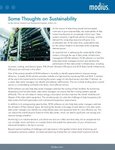Nobody carries out a data migration for fun.
It is a critical part of broader business transformation, and should always be underpinned by the vital question: “Will my business operate smoothly post-migration?”
Anything short of a confident “yes” risks the success of your entire transformation.
All data migrations are complicated, but when they involve large amounts of data in Enterprise Resource Planning (ERP) systems they can be even more daunting.
Not least because ERP systems are integral to day-to-day business activities from accounting and procurement, to sales and supply chain operations consequently, delays and downtime can have a significant impact on your business.
Migrations are rarely straightforward, often involving moving data from multiple sources to multiple targets across multiple go-lives, adding further layers of complexity.
How do we navigate this labyrinth? The secret lies in the classic trio: People, Process, and Platform, although perhaps in a slightly different order, and with a special emphasis on thinking data first, putting data at the heart of your transformation.
Plan the process: it’s all about data
Preparation is the most crucial part of any migration. Although it is a big investment at the start of your project, it can significantly reduce complexity and make it easier to anticipate challenges.
And taking a data-first approach during the initial stages of a project, building data quality assurance into your processes, will improve your results even further.
Ignoring your data, on the other hand, could have serious consequences.
Take, for example, consolidated sales reporting data. A common business requirement. Every customer I have worked with has duplicate records in their system. This is a problem.
Duplicate data can result in slower reporting and inaccurate forecasting, and ultimately, flawed planning. Long term, it can impact on the understanding of a business’s financial health.
Migrating duplicate data in this case clearly makes no sense and this example is just the tip of the iceberg.
So take the time to plan. Consider what you are trying to achieve through the transformation, consider the data you need to support it, and plan accordingly. It will be worth it.
Platform: Enhance data for better results
Data enrichment and validation are often underappreciated and underestimated.
But migrating out-of-date data, or data that’s simply wrong, is obviously going to impact on the smooth running of your new platform post-migration. Take this opportunity to fix inaccurate data or supplement missing data to ensure quality and relevance.
Traditionally, tools like MS Excel have been used for this purpose. However, while user-friendly for small-scale projects, such tools struggle with large volumes of data and pose challenges in version control and collaboration. Often manual and time-consuming, managing data this way requires meticulous attention to detail and is prone to errors.
For a glimpse into how this can escalate, I’ve known a company using over 5,000 Excel documents to manage their migration. Staying on top of that volume effectively, without adding significant risk to a project, is simply unimaginable and there are better ways.
Instead of creating file after file, there are several purpose-built platforms that provide a central, structured, and governed approach to these activities. This will free up time to focus on delivering your migration.
People: handle with care
Sooner or later, the activities will start in earnest. People from across your organization will get involved and start working on their activities which could be mapping, data validation, and enrichment among others.
It is really important to use their time effectively, and make it as easy as possible for them to help you.
For example, let’s talk about data validation - a vital stage in the process that cannot be rushed.
It requires extensive checks and business input and is so vital to the project that speeding through and not doing it properly risks project failure.
But there are opportunities to make it easier for the people involved. Bringing them in at the right time is important. Instead of overloading your users with huge files of data to check, try only sharing the errors.
This approach is much more efficient, more effective, and just as important, repeatable.
If you do one thing, think data first
With data at the heart of successful business transformations, adopting a data first approach ensures thorough planning and preparation, helping to manage the complexities of modern digital transformations.
It is the most effective way to guarantee that your project meets its business objectives – and that your day-to-day operations run smoothly post-migration.

![Kevin Wild[42]](https://media.datacenterdynamics.com/media/images/Kevin_Wild42.2e16d0ba.fill-180x180.jpg)






